You’d have to be living completely off the grid or doing some kind of technology cleanse to not have discovered an exciting new brand or product this past year via social media. Retail therapy may have become a bit of a coping mechanism for those of us stuck at home during the pandemic (how else was I supposed to expand my collection of Business Caftans?)
An effective full funnel social strategy was a known best practice for brands before the world was placed in quarantine, of course. But as ecommerce has become inextricably linked from social media, it’s become a crucial differentiator. Too many businesses are missing the opportunity to maximize ROAS and drive sustainable long-term growth by investing in the upper funnel on social.
It’s time to stop subsisting on the feast-or-famine cycle driven by overindexing at the bottom of the funnel. So let’s start at the beginning and take a look at what full funnel social really means.
Driving brand awareness does not always equal prospecting
Marketers often assume that “full funnel” simply means prospecting or driving traffic. But that’s based on a lot of misconceptions.
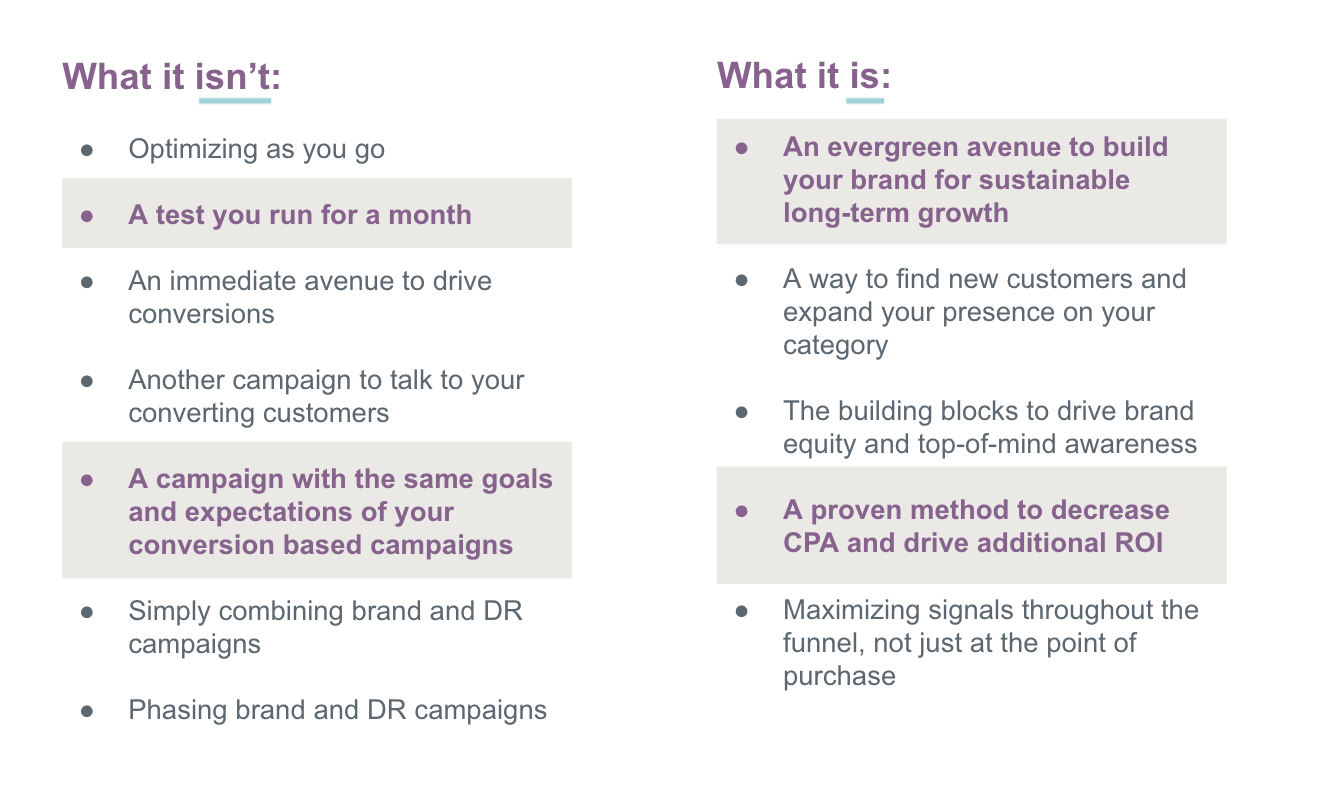
But building brand awareness and equity starts with new customers, with discovery. Without investing in exposing your brand to new audiences, you just end up talking to the same people again and again, which inevitably means diminishing returns.
You need to keep your marketing machine in good working order by consistently filling the upper funnel so your direct response efforts will stay fruitful (pun intended) in the long term.
Think about it this way: if direct response, lower funnel marketing is like picking fruit from a tree, eventually you’re going to run out of fruit, or at least see a lot less fruit, if you’re not doing something to sustain the tree. Upper funnel social campaigns are what sustain the tree: they keep it watered and healthy and ready to keep bearing more fruit.
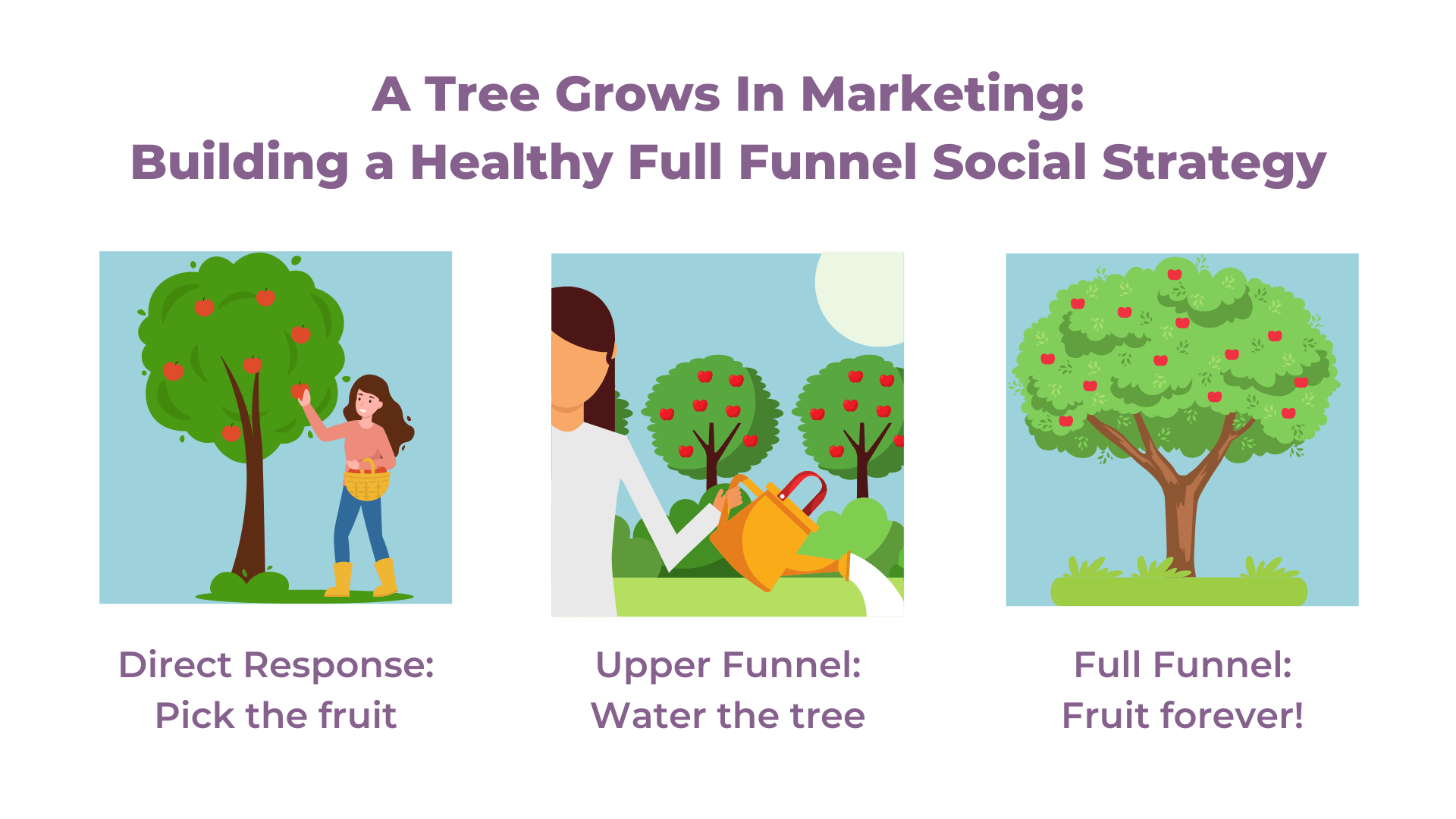
It’s fine to budget out your social strategy with conversions in mind: that’s always the end goal. But remember: even if the conversions seem plentiful now, without a consistent infusion of new audiences from the upper funnel, you’ll start to experience diminishing returns. You can’t solely focus on sales or take a transactional approach to every interaction. To build real incremental growth over time, you can’t just focus on capturing a single one-time purchase, you need to build lasting relationships between your customers and your brand.
That starts at the top of the funnel.
Investing across the funnel unlocks the full potential of your brand
If you didn’t find that analogy convincing, let’s try the other side of the brain with some good old-fashioned math. Let’s say you’re a beauty brand focused on women. Here’s a rough version of what your universe might look like on Facebook:
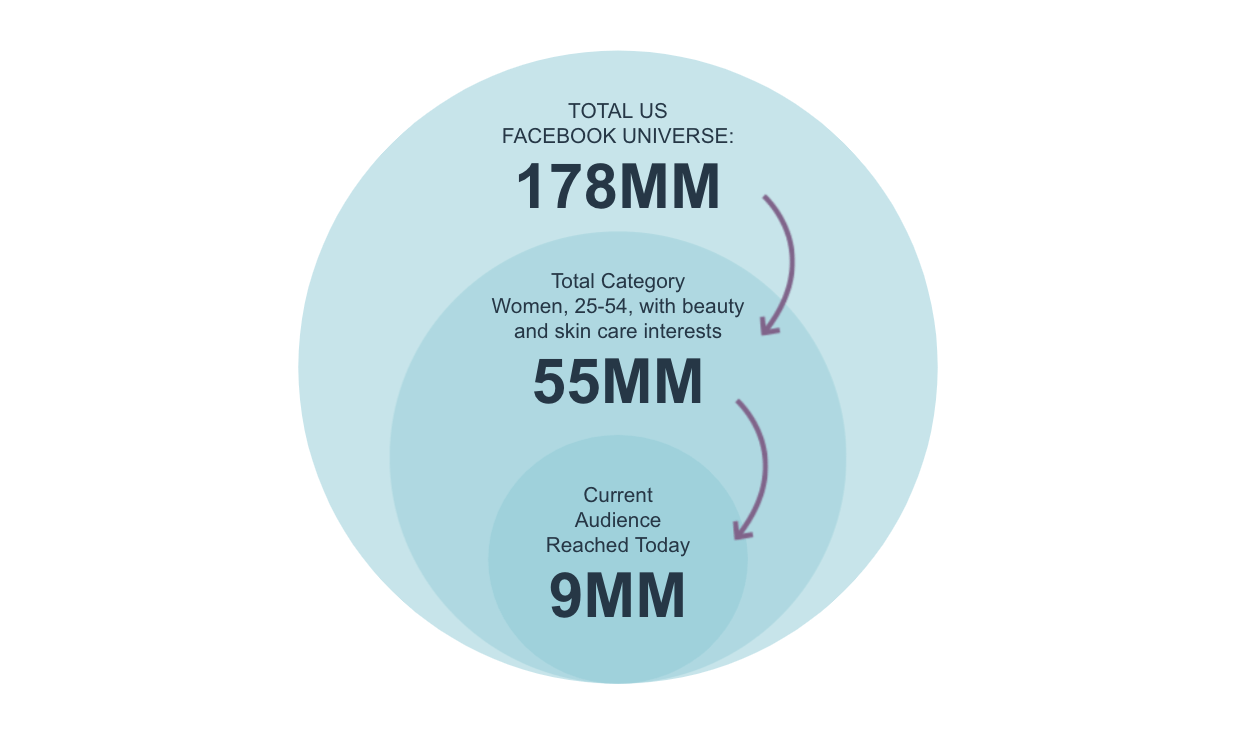
While there are 178 million active Facebook users over the age of 18 in the US, your brand doesn’t need to connect with all of them. But of the 55 million potential customers that meet your criteria, you’re only reaching 9 million.
If you’re not investing in the upper funnel to get your brand in front of the other 46 million qualified people you’re not talking to right now, you’re leaving a significant amount of opportunity to grow brand awareness on the table. In all likelihood, you’re prospecting and retargeting and hitting those 9 million people over and over. Without watering the tree, without replenishing that audience with fresh potential customers, that fruit is going to start to dry up at some point.
That’s bad business. Or at the very least inefficient, short-term-only business.
Full funnel social campaigns are the remedy for diminishing returns from social spend.
Full funnel campaigns that use broad targeting and build brand awareness are the solution. They will make sure your brand can:
- Reach new audiences
- Deliver better incrementality and performance than a strategy focused solely on bottom-funnel optimization
- Move more people to the conversion stage
- Sustain long-term growth
- Fulfill upper-funnel KPIs (reach, brand awareness) that eventually translate to conversions
- Enable people-based measurement and attribution across the customer journey
- Mitigate the risk of audience exhaustion
Full funnel leads to more efficient spend and stronger ROAS in the long term because it expands the pool of people you’re talking to and brings more qualified potential customers into contact with your brand.
With more than 82% of people in the US using one or more social platforms and spending over 2 hours a day on those networks, the time is now to expand your social strategy into the upper funnel.
Brands that are investing in reaching the 68% of North American shoppers who enjoy discovering new brands on social channels have a distinct advantage over their competition. And it’s not just consumer behavior trends that are shifting to favor brands prioritizing increasing brand awareness.
A full funnel strategy will also help mitigate:
- Rising delivery costs: CPCs are going up across the board for every single vertical and industry
- Decrease in CTRs: engaging is increasingly more expensive
- Decrease in performance trends: increase in CPA, decrease in conversion rate
Expanding your strategy to take advantage of the full funnel on social
We’ve put together a helpful roadmap to full funnel success that will help you unlock long-term, sustainable growth for your brand on social.
Step 1: Identify your audience
Everything in full funnel starts with your customers. Start by asking some key questions about your core audience:
- Who did you build your product for?
- What do you know about your audience?
- What are they shopping for?
- What are they passionate about?
- How do we get the brand in front of more people in the category who are interested but might not be aware?
>Wpromote’s Strategy and Planning team uses advanced tools to help get even deeper insights into those essential questions about audience behaviors, interests, motivation, and media consumption. Use your new audience intelligence to help you move up the funnel more effectively, powering better targeting, creative messaging, and channel selection.
Step 2: Evolve current creative & messaging to speak to that audience
Creative and messaging in the upper funnel is different from what you’re probably used to in DR. The purpose is to introduce your brand and establish familiarity and even authority, not get the audience to make a purchase right now or even take an action. Remember: you’re watering the tree to gather more fruit later.
Brand awareness creative needs to:
- Focus on your brand, not your product or service
- Establish an emotional connection or pull with your audience
- Get attention and stop the scroll
- Build a sense of familiarity so your lower funnel consideration and conversion ads are more effective
These ads don’t necessarily require a huge creative lift; often your lower funnel ad creative and copy can be tweaked to work in the context of brand awareness campaigns. Remember that these require a little more time to run, so you don’t need to be switching them out constantly; they’re about taking the customers on a journey so they’re more receptive to your message because they know who you are, not iterating based on performance.
Step 3: Activate long-term awareness campaigns
Investing in a full funnel approach is truly a long-term game, and once you’re before you launch your campaign, you need to understand how to measure success beyond short-term DR metrics. Initial metrics like lift in site traffic or a surge for branded searches on Google Trends function as indicators that what you’re doing is working, but brand awareness takes time, and brand studies (which require a minimum of impressions and reach to reach statistical significance) are the only complete way to measure success.
Facebook offers several different types of brand studies, which focus on building the funnel, improving the funnel, and optimizing the funnel. But the basic building blocks are the same:
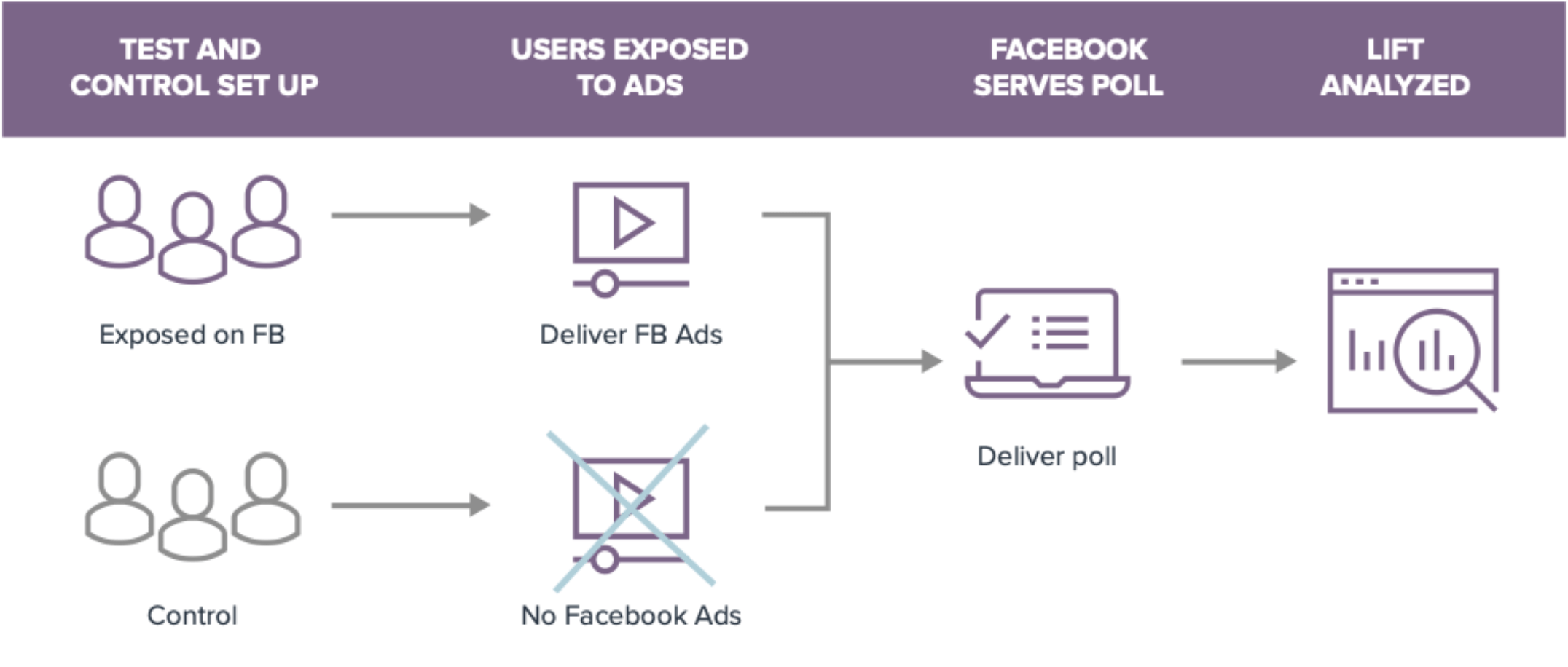
Remember that full funnel activation doesn’t mean immediate results.
Once you start to see that halo effect, you should look to brand studies to understand what effect your upper funnel campaigns are having on conversion and overall revenue.

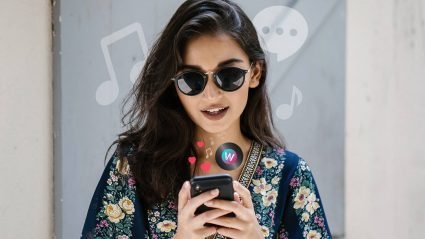

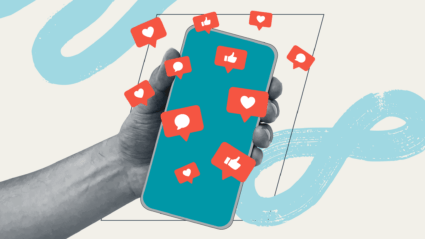

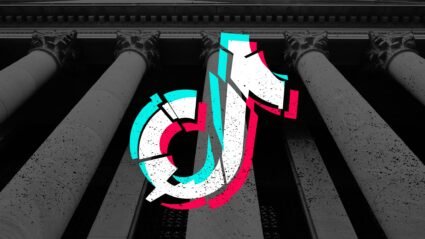

Responses